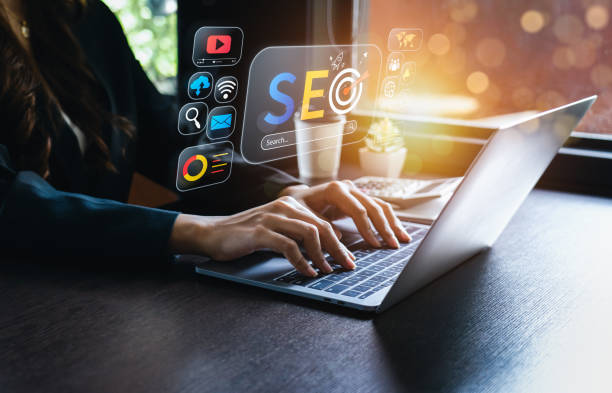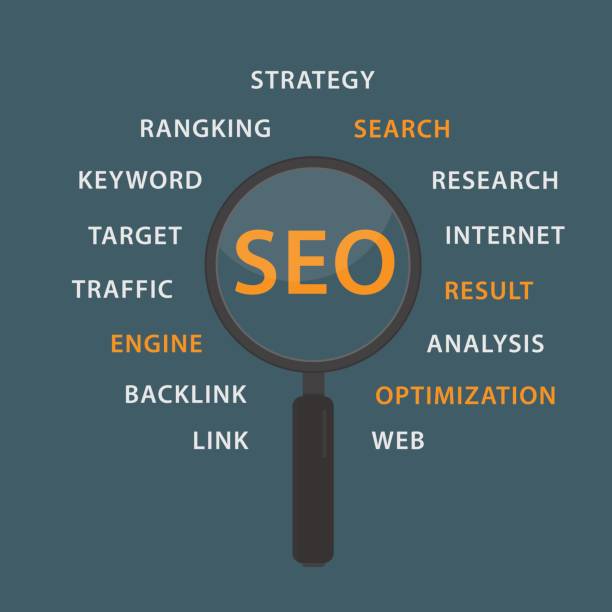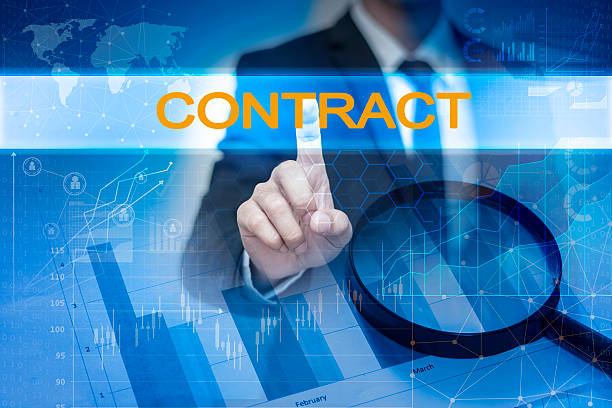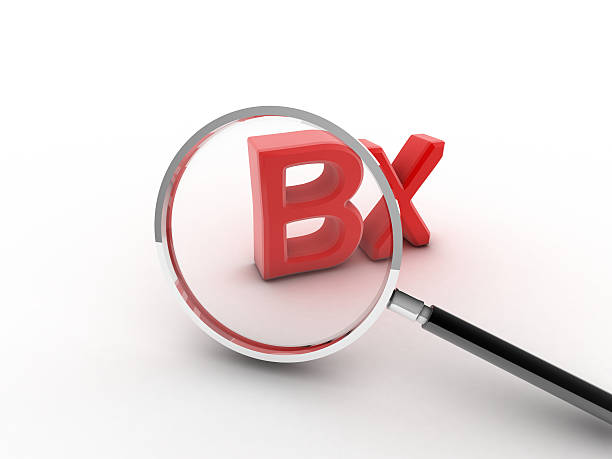What is On-Page SEO and Why Does it Matter?

On-Page SEO refers to the set of actions you take within your website to improve your site’s ranking in Google search results and other search engines.
These actions include optimizing content, HTML code, site structure, and other internal site elements.
The importance of On-Page SEO stems from the fact that search engines use these factors to better understand your site’s content and its relevance to users’ search queries.
In other words, if your site is not optimized for On-Page SEO, even with the best content, you may not achieve a good ranking in search results.
To better understand the importance of On-Page SEO, imagine you have a library.
If you piled your books randomly on top of each other, it would be very difficult for a visitor to find a specific book.
But if you categorize and index the books based on subject, author, and other criteria, finding the desired book will be much easier.
On-Page SEO does exactly the same thing for search engines, helping them easily understand and index your site’s content.
By optimizing your website’s On-Page SEO, you increase your chances of being seen by your target audience and can attract more traffic to your site.
Also, On-Page SEO is a crucial component of an SEO strategy that helps you achieve better results compared to your competitors.
In fact, by focusing on On-Page SEO, you can turn your site into a valuable resource for users and search engines.
#SEO #Optimization #Search_Engine
How much does losing business leads due to an unprofessional site cost you? Solve this problem forever with a professional corporate website design by Rasaweb!
✅ Increased credibility and trust of potential customers
✅ Easier attraction of new business leads
⚡ Get a free consultation now!
Keyword Research and Choosing the Best Ones

Keyword research is one of the most important steps in On-Page SEO.
Keywords are the terms that users search for in search engines to find the information they need.
Choosing the right keywords helps you optimize your content for the terms your target audience is searching for and attract more traffic to your site.
To start keyword research, you can use various tools such as Ahrefs, Semrush, Google Keyword Planner, and Keywordtool.io.
These tools help you find keywords related to your field of work, check their search volume, and assess the competition for each keyword.
When choosing keywords, pay attention to the following:
- Relevance Keywords should be relevant to your site’s content.
- Search Volume Keywords should have a reasonable search volume.
- Competition Keywords should have reasonable competition.
Choosing keywords with very high competition may be difficult.
Also, remember that On-Page SEO is not limited to choosing keywords, and you should use these keywords naturally and in the right place in your content.
Overusing keywords can lead to your site being penalized by search engines.
On-Page SEO requires careful research and smart keyword selection to get the best results from your efforts.
By doing proper keyword research, you can optimize your content for your target audience and increase your site’s organic traffic.
Optimizing Titles and Meta Descriptions

Titles and Meta Descriptions play a very important role in On-Page SEO.
The page title is the text displayed at the top of the browser and in search results.
The meta description is a summary of the page’s content that is displayed below the page title in search results.
Optimizing titles and meta descriptions helps search engines better understand the content of the page and helps users decide whether they want to click on your site’s link or not.
To optimize titles, keep the following in mind:
- The title should be attractive and relevant to the page’s content.
- The title should include the page’s main keyword.
- The title should not exceed 60 characters.
To optimize meta descriptions, keep the following in mind:
- The meta description should be an accurate and engaging summary of the page’s content.
- The meta description should include the page’s main keyword.
- The meta description should not exceed 160 characters.
Remember that titles and meta descriptions should be unique and different for each page of your site.
Using duplicate titles and meta descriptions can lead to a decrease in your site’s ranking in search results.
By optimizing titles and meta descriptions, you can increase your click-through rate (CTR) in search results and attract more traffic to your site.
This is one of the most important aspects of On-Page SEO that should not be overlooked.
Finally, remember that the main goal of On-Page SEO is to provide the best user experience.
Search engines are always looking to provide the best results to their users.
Therefore, if your site provides a good user experience, you will have a better chance of achieving a high ranking in search results.
| Element | Description |
|---|---|
| Page Title | Maximum 60 characters, including keyword |
| Meta Description | Maximum 160 characters, summary of page content |
Content Optimization for Search Engines and Users

Content is king! This phrase is very famous in the world of On-Page SEO.
High-quality and optimized content is one of the most important factors in achieving a high ranking in search results.
Your content should be attractive and useful to users and answer their questions.
Also, your content should be optimized for search engines so that they can easily understand and index your content.
To optimize content, keep the following in mind:
- Quality Your content should be of high quality and valuable.
- Relevance Your content should be relevant to the target keywords.
- Readability Your content should be readable and understandable.
Use short paragraphs, headings, and subheadings. - Keywords Use keywords naturally and in the right place in your content.
Avoid overuse. - Freshness Update your content regularly.
In addition to this, pay attention to image optimization.
Save your images with appropriate file names and use the Alt tag to describe the images.
The Alt tag helps search engines understand your images and display them in image search results.
By producing high-quality and optimized content, you can increase your site’s organic traffic and attract your target audience.
This is one of the most basic strategies of On-Page SEO.
On-Page SEO helps you present your content in a way that is attractive to both users and search engines.
By following the principles of content optimization, you can improve your site’s ranking in search results and attract more traffic to your site.
Research shows that 80% of customers trust companies with professional websites more. Does your current website inspire this trust?
With Rasaweb’s corporate website design services, solve the problem of customer distrust and weak online presence forever!
✅ Create a professional image and increase customer trust
✅ Attract more sales leads and grow your business⚡ Get a free consultation
Optimizing URL Structures

URL structure is another important factor in On-Page SEO.
URLs are the addresses of your web pages and should be designed to be understandable to both users and search engines.
Optimized URLs help search engines better understand your site’s structure and help users understand what page of your site they are on.
To optimize the URL structure, keep the following in mind:
- Shortness URLs should be short and concise.
- Relevance URLs should be relevant to the page content.
- Keywords URLs should include the page’s main keywords.
- Use hyphens Use hyphens (-) instead of spaces to separate words in URLs.
- Stability Do not change URLs after publishing the page.
Changing URLs can lead to the page losing its ranking in search results.
For example, instead of using the following URL:
www.example.com/page?id=123
Use the following URL:
www.example.com/seo-dakheli-rahnama
The second URL is both shorter, relevant to the page content, and includes the page’s main keyword.
By optimizing the URL structure, you can improve your site’s On-Page SEO and increase your site’s ranking in search results.
This is an important aspect of On-Page SEO that is often overlooked.
Remember that a proper URL structure indicates good organization of your site and helps users and search engines easily navigate your site.
This helps improve the user experience and increases the likelihood of users returning to your site.
Optimizing Site Loading Speed

Site loading speed is an important factor in user experience and On-Page SEO.
Users expect web pages to load quickly.
If your site is slow, users may give up visiting your site and go to another site.
In addition, search engines also care about site loading speed and rank faster sites higher in search results.
To optimize site loading speed, you can take the following steps:
- Optimize Images Save your images in the appropriate format and reduce their size.
- Enable Compression Use Gzip compression to reduce the size of HTML, CSS, and JavaScript files.
- Use a CDN Use a Content Delivery Network (CDN) to host your site’s static files.
- Optimize Code Optimize your HTML, CSS, and JavaScript code and avoid unnecessary and redundant code.
- Use Caching Use caching to store your site’s static files so that they load quickly on subsequent visits.
You can use various tools such as Google PageSpeed Insights and GTmetrix to check your site’s loading speed and identify potential problems.
By optimizing your site’s loading speed, you can improve the user experience, increase conversion rates, and improve your site’s ranking in search results.
This is a crucial aspect of On-Page SEO that you should pay special attention to.
On-Page SEO with high speed means satisfaction for users and search engines.
By investing in site speed optimization, you can achieve significant results in your site’s traffic and ranking.
Mobile Optimization

Today, more than half of web traffic comes from mobile devices.
Therefore, optimizing your site for mobile (Mobile-Friendly) is one of the most essential steps in On-Page SEO.
If your site is not optimized for mobile, mobile users may have a poor user experience and give up visiting your site.
In addition, Google also cares about mobile-friendly sites and ranks them higher in mobile search results.
To optimize your site for mobile, you can take the following steps:
- Responsive Design Use responsive design so that your site automatically adapts to the screen size of different devices.
- Loading Speed Optimize your site’s loading speed on mobile devices.
- Use Readable Fonts Use readable fonts with appropriate sizes for display on mobile devices.
- Large Buttons Design your buttons and links large enough so that mobile users can easily click on them.
- Prevent Pop-ups Avoid displaying pop-ups on mobile devices.
You can use the Google Mobile-Friendly Test tool to check if your site is mobile-friendly.
By optimizing your site for mobile, you can improve the user experience, increase your site’s mobile traffic, and improve your site’s ranking in mobile search results.
On-Page SEO in the mobile world is the key to success.
Given the increasing use of mobile devices, optimizing for these devices is not just a competitive advantage but a necessity.
Mobile-friendly On-Page SEO helps you make the most of this opportunity.
| Aspect | Recommendation |
|---|---|
| Design | Responsive |
| Speed | Optimize for fast loading speed |
| Font | Readable and appropriately sized |
Using Internal Links

Internal Links are links that point from one page of your site to another page of the same site.
Using internal links is one of the best ways to improve On-Page SEO and user experience.
Internal links help search engines better understand your site’s structure and help users easily navigate your site.
To use internal links, keep the following in mind:
- Relevance Internal links should point to pages related to the topic of the current page.
- Anchor Text Use descriptive anchor text related to the destination page for internal links.
- Number The number of internal links on each page should be reasonable.
Avoid overuse. - Position Place internal links in appropriate positions on the page.
For example, if you are writing an article about On-Page SEO, you can link to other articles about keyword research, optimizing titles and meta descriptions, and optimizing site loading speed.
By using internal links, you can help users access more information and spend more time on your site.
This helps improve your site’s ranking in search results.
On-Page SEO with smart links is a win-win strategy.
On-Page SEO with strong internal links not only helps improve site ranking but also improves user experience.
By creating a regular and relevant internal link network, you can direct users to different pages of your site and keep them engaged with your content.
Are you annoyed by losing customers who have visited your site to purchase?
Rasaweb is your specialized solution for having a successful online store.
✅ Significantly increase your online sales
✅ Create trust and professional branding with customers⚡ Get a free consultation from Rasaweb experts!
Using Schema Markup

Schema Markup is a code that helps search engines better understand the content of your web pages.
By using Schema Markup, you can provide search engines with additional information about your content, such as the type of content, author, publication date, etc.
This additional information can help search engines provide users with richer and more relevant search results.
To use Schema Markup, you can use various tools such as Schema Markup Generator.
These tools help you create the appropriate Schema Markup code for your content type and add it to the HTML code of your pages.
Using Schema Markup is an advanced On-Page SEO technique that can help improve your site’s visibility in search results.
For example, if you are writing a news article, you can use Schema Markup to provide information such as the article title, author, publication date, and summary of the article to search engines.
This information can be displayed as a rich snippet in search results and increase your click-through rate (CTR).
On-Page SEO with Schema Markup is a smart way to attract the attention of search engines.
On-Page SEO with Schema Markup allows you to tell search engines exactly what your content is about.
This helps improve your site’s ranking and visibility in search results and attracts more traffic to your site.
Measuring and Analyzing Results

After taking On-Page SEO actions, it is important to measure and analyze your results to understand which actions were effective and which need improvement.
To measure and analyze On-Page SEO results, you can use various tools such as Google Analytics and Google Search Console.
These tools help you check your site traffic, identify the keywords that users are entering your site with, and track your site’s ranking in search results.
By analyzing the results, you can see which pages of your site have more traffic, which keywords are generating traffic for you, and which pages of your site need more optimization.
Based on this information, you can improve your On-Page SEO strategy and achieve better results.
On-Page SEO without measurement and analysis is like driving in the dark.
In general, measuring and analyzing On-Page SEO results is an ongoing process.
You should regularly check your results and adjust your strategy accordingly.
By doing this, you can make sure that you are always on the right track and achieve your goals in On-Page SEO.
On-Page SEO with accurate measurement and smart analysis helps you improve your site’s performance and attract more traffic to your site.
This is a dynamic process that requires constant attention and follow-up.
Frequently Asked Questions
| Question | Answer |
|---|---|
| What is On-Page SEO? | It refers to the set of actions performed within the website to improve ranking in search engines. |
| Why is On-Page SEO important? | Because it helps search engines better understand your site’s content and structure and improves the user experience. |
| What are the most important elements of On-Page SEO? | Title and meta descriptions, keywords, URL structure, quality content, image optimization, internal linking, and site speed. |
| How to optimize the Title Tag and Meta Description? | The title should include the main keyword and be attractive, and the meta description should be an encouraging summary of the content with relevant keywords. |
| What is the role of keywords in On-Page SEO? | Keywords tell search engines what the page content is about and should be used naturally and intelligently in the text. |
| How is image optimization done for On-Page SEO? | By compressing the size, using a descriptive file name, and filling the Alt tag with relevant descriptions and keywords. |
| What is Internal Linking and what is its application? | Connecting different pages of the site to each other. This helps to distribute the Page Authority and improve the crawling of search engines. |
| What is the importance of site loading speed in On-Page SEO? | High speed improves the user experience and is one of the important ranking factors for search engines such as Google. |
| What effect does site Mobile-Friendliness have on On-Page SEO? | Given the increase in mobile users, being responsive is necessary to provide a good user experience on all devices and for Google’s mobile-first indexing. |
| What are the important factors related to content in On-Page SEO? | Originality, quality, comprehensiveness, readability, proper use of headings (H1, H2,…) and regular content updates. |
And other services of Rasa Web advertising agency in the field of advertising
Smart Social Media: Revolutionize campaign management with the help of key page optimization.
Smart Reportage: A new service to increase sales through proprietary programming.
Smart Data Analysis: Designed for businesses looking to manage campaigns through Google Ads management.
Smart SEO: A new service to increase site visits through a SEO-oriented content strategy.
Smart Customer Journey Map: Transform sales increases with accurate audience targeting.
And more than a hundred other services in the field of internet advertising, advertising consulting and organizational solutions
Internet Advertising | Advertising Strategy | Advertising Reportage
Resources
SEORooz – What is On-Page SEO and What is its Importance?
,Limotop – What is On-Page SEO?
,Raya Marketing – What is On-Page SEO?
,Ninja Site – What is On-Page SEO? + On Page SEO Training
? For the growth and visibility of your business in the online space, Rasaweb Afarin Digital Marketing Agency is with you by providing comprehensive and specialized services. Among our services is Corporate Website Design in accordance with the latest world standards.
📍 Tehran, Mirdamad Street, next to the Central Bank, South Kazerun Alley, Ramin Alley No. 6



